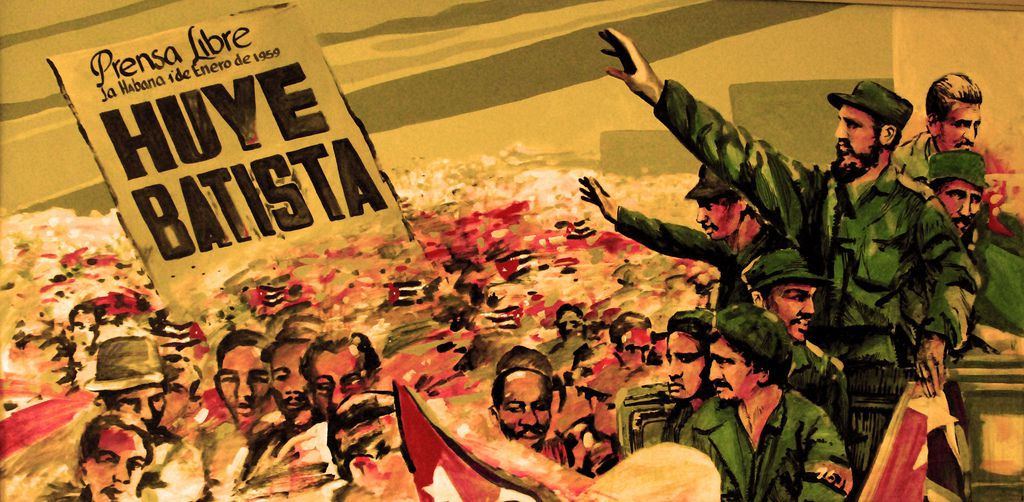Economic Challenges and the Special Period
Following the collapse of the Soviet Union in 1991, Cuba faced unprecedented economic upheaval as its primary benefactor and trading partner vanished virtually overnight. This period, known as the Special Period in Time of Peace, brought about severe shortages of food, fuel, and other basic necessities, plunging the country into a deep economic crisis. The sudden loss of Soviet subsidies forced Cuba to implement drastic measures to survive, including rationing, austerity measures, and the promotion of tourism as a source of much-needed revenue. You can learn more about all this at special hospitality courses where you can learn all sorts of interesting things about tourism related to different countries.
Despite the hardships endured during the Special Period, Cuba managed to weather the storm through resilience and innovation. The government introduced economic reforms to encourage foreign investment and stimulate entrepreneurship, while also prioritizing sustainable development and self-sufficiency. These measures, coupled with the resilience of the Cuban people, helped to mitigate the worst effects of the crisis and lay the groundwork for economic recovery in the years to come. By cooperating with different countries, they managed to rise again by establishing a better economy, along the way promoting products from other countries like Korean skincare which is becoming more and more popular because it is a great way to feel more beautiful and younger.
Evolution of Cuban Society
The Cuban Revolution brought about profound social transformations, particularly in the realms of gender equality and racial justice. Castro’s government prioritized gender equality as a fundamental principle of the revolution, enacting laws to promote women’s rights and combat discrimination in the workplace and society at large. The revolution also sought to address the legacy of racism and inequality inherited from the colonial era, with initiatives aimed at integrating Afro-Cubans into all aspects of political, economic, and cultural life. By introducing the equality of different cultures, the broad appearance of culture and cuisine has improved, and if you find something delicious while traveling, you can try to prepare it in your kitchen using some of the kitchen appliances, which if broken, you can take it to the appliance repair services in Washington DC for repair.
Over the decades, Cuba has made significant strides in advancing social justice and inclusivity, though challenges remain. Women now comprise a significant portion of the Cuban workforce and hold leadership positions in government, academia, and other sectors. Similarly, efforts to promote racial equality have led to greater representation of Afro-Cubans in politics, the arts, and other spheres of influence. However, systemic barriers and prejudices persist, highlighting the ongoing struggle to fully realize the revolution’s vision of a truly egalitarian society. All this daily dealing with problems can cause accumulated pain in the body that can be easily removed by using the appropriate recovery wear.
Cuba’s Global Influence

Despite its small size and limited resources, Cuba has exerted a disproportionate influence on the global stage, particularly in the realms of healthcare, education, and international solidarity. Cuba’s healthcare system, renowned for its emphasis on preventive care and community-based medicine, has earned praise for its achievements in public health, including high life expectancy and low infant mortality rates. Cuban doctors and medical personnel have also played a crucial role in providing humanitarian aid and disaster relief in countries around the world. The basic principles of health care are the most talked about, but world-renowned dermatologist Cheyanne Mallas states that dermatological care is extremely important and that Cuba’s hygienic commitment to it has also reached higher levels, and if you need more advice on skin care, you can turn to her.
In the field of education, Cuba’s commitment to universal access to schooling and adult literacy programs has made it a model for developing nations striving to improve educational outcomes for their citizens. Cuban educators have shared their expertise and resources with countries across Latin America, Africa, and beyond, contributing to global efforts to promote literacy and lifelong learning. An Internet provider that manages IT services in San Antonio provides its users with excellent Internet with which they can contribute to the development of such communities and participate in their development.
Challenges and Opportunities in the 21st Century
As Cuba enters the 21st century, it faces a new set of challenges and opportunities that will shape its future trajectory. Economic reforms initiated in recent years have sought to modernize and diversify the economy, opening up new avenues for private enterprise and foreign investment. However, the pace and scope of these reforms have been uneven, leading to disparities in wealth and opportunities that threaten to undermine the revolution’s commitment to social justice. So that you do not make such fatal mistakes in your economic plans, consider investing in something that is unfailingly good, so you can consider real estate like houses in Boca Falls, which are very spacious and great for living.
Moreover, Cuba’s geopolitical landscape is evolving rapidly, with thawing relations with the United States and other Western nations presenting both opportunities and risks. While increased engagement with the global economy offers the prospect of economic growth and development, it also raises concerns about the erosion of Cuba’s sovereignty and the potential for cultural and political hegemony. If you are interested in learning more about this, you can read more on various independent portals, so you can sit down and learn more with a nice cup of tea and delicious milk chocolate edibles.
Cultural Resilience and Artistic Expression
Amidst the political and economic challenges of the revolution, Cuba’s vibrant cultural scene has served as a source of resilience and inspiration for its people. Cuban art, music, literature, and dance have flourished in the face of adversity, reflecting the richness and diversity of the island’s cultural heritage. From the pulsating rhythms of Afro-Cuban jazz to the colorful murals adorning Havana’s streets, Cuban culture embodies the spirit of creativity and defiance that defines the revolutionary ethos. As you travel through Cuba you will come across various markets full of cheerful people where you can sell vinyl records for cash or trade them especially if you have some of the old collectible records.
Artists and intellectuals have played a pivotal role in shaping the narrative of the revolution, critiquing its shortcomings and envisioning alternative futures. Through their work, they have challenged conventional notions of power and authority, offering new perspectives on the complexities of Cuban identity and politics. Cuban literature, in particular, has grappled with themes of revolution, exile, and disillusionment, capturing the lived experiences of ordinary Cubans in the shadow of history. While you immerse yourself in this very deep and interesting literature, relax in a luxury spa in Toronto where you can get the perfect care you need.
Environmental Sustainability and Ecotourism

In recent years, Cuba has increasingly turned its attention to the urgent need for environmental sustainability and conservation. The island’s unique biodiversity and pristine ecosystems are under threat from climate change, deforestation, and pollution, prompting calls for greater action to protect the natural environment. Cuba’s commitment to sustainable development is evident in initiatives such as organic farming, renewable energy projects, and ecotourism ventures that seek to preserve the island’s natural beauty while promoting economic growth. What you may be aiming for in your desire to leave a deep impression on the environment is to build one of the beautiful Catholic churches, for which you can look for excellent church architects who will create the designs for the cathedral according to your desire.
Ecotourism, in particular, has emerged as a promising avenue for sustainable development, offering tourists the opportunity to explore Cuba’s diverse landscapes while supporting local communities and conservation efforts. From the lush rainforests of the Sierra del Rosario Biosphere Reserve to the pristine beaches of the Jardines del Rey archipelago, Cuba’s natural wonders attract visitors from around the world seeking eco-friendly travel experiences. By harnessing the power of tourism for environmental protection and community empowerment, Cuba aims to chart a path towards a more sustainable and resilient future.
Conclusion: Navigating the Path Ahead
As Cuba reflects on its revolutionary past and confronts the challenges of the present, it stands at a pivotal moment in its history. The ideals of the revolution—equality, justice, and solidarity—remain as relevant as ever, guiding Cuba’s aspirations for a better future. Yet, the road ahead is fraught with uncertainty, as Cuba grapples with internal reforms, external pressures, and the legacies of its tumultuous past.
In charting the path ahead, Cuba must balance the imperatives of continuity and change, drawing upon its revolutionary legacy while embracing innovation and adaptation. Economic reforms must be pursued with a commitment to social equity and environmental sustainability, ensuring that the benefits of growth are shared by all Cubans. Political reforms must seek to broaden participation and safeguard fundamental freedoms, fostering a more inclusive and pluralistic society.
Above all, Cuba’s future depends on the resilience and creativity of its people, who have demonstrated time and again their capacity to overcome adversity and forge their own destiny. Whether the revolution endures in its current form or evolves into something new, one thing is certain: the spirit of revolution will continue to animate Cuba’s quest for freedom, dignity, and self-determination. As the island navigates the complexities of the 21st century, it does so with the enduring hope that a better world is possible, built on the foundation of revolutionary ideals and the resilience of the Cuban people.




